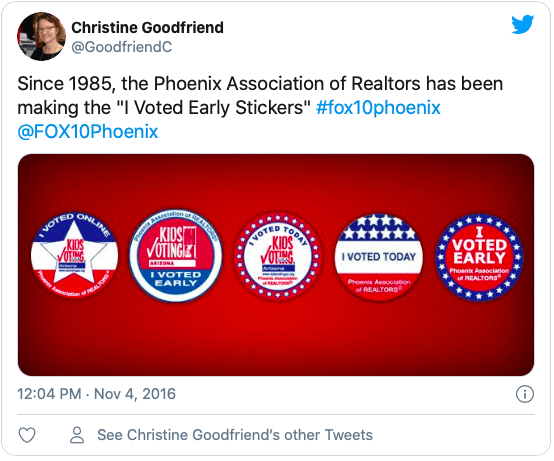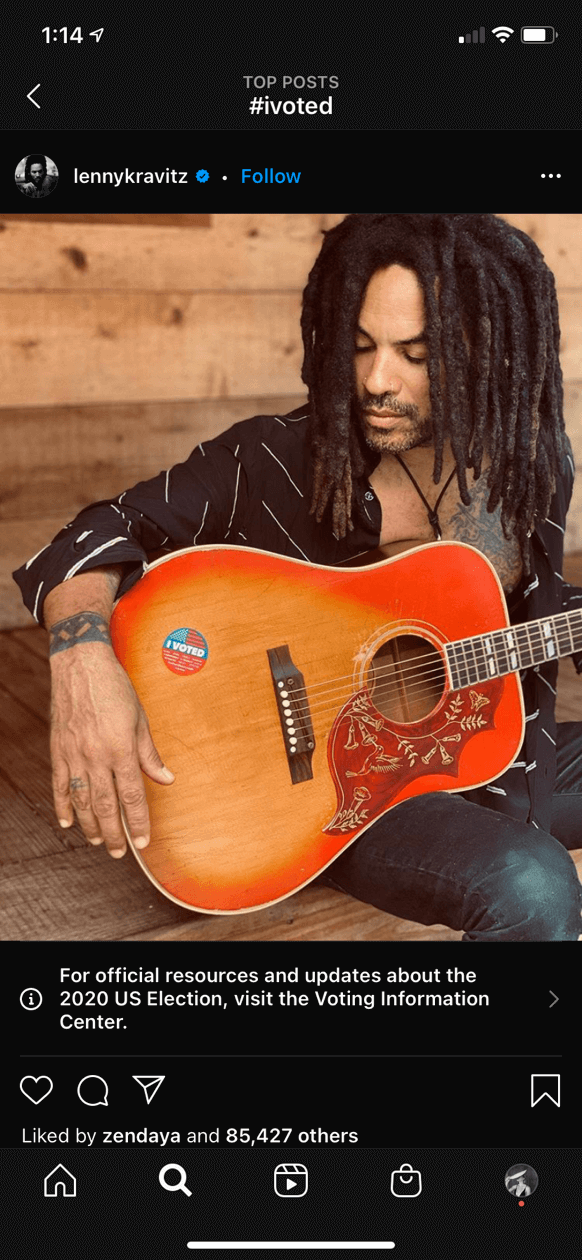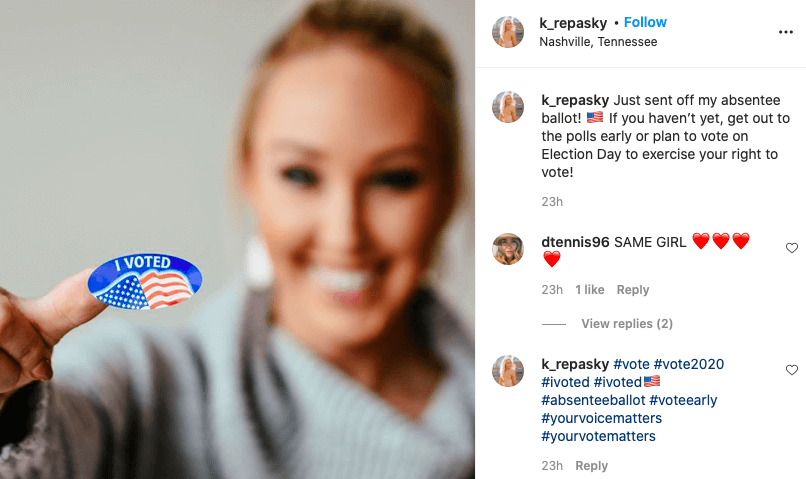Every four years, we are reminded of one of the greatest marketing strategies that has ever existed: the ‘I Voted’ sticker. We see it everywhere: on people’s shirts, plastered on laptops, and all over social media feeds. But what makes this tactic truly impressive is that most people don’t even realize that this is even a marketing ploy.
While no one knows exactly who is responsible for the sticker, the earliest mention of it in the media was in 1982. Small businesses in Fort Lauderdale banded together to offer discounts to people who could prove they had voted that day. This incentive could be what launched the idea for the sticker.
However, the Phoenix Realtors Association insists that they are the ones responsible for the idea and have given out stickers since 1985.

But no matter who designed and gave out the first sticker, the fact is that this idea took off. Virtually all polls and ballot drop off stations across the country offer them to voters. These days, you will see people proudly posting images of their ‘I Voted’ stickers on Instagram and Facebook. Even big celebrities are using their platforms to encourage voters by displaying their stickers.

There are a couple things of note with the ‘I Voted’ sticker:
- It’s effective at continuously growing voter turnout. In fact, this little sticker has proven to increase the likelihood that a person will not only vote for that election, but future ones as well.
- It’s even popular among an entire group of people that aren’t yet able to actually do what the sticker says they did: the under-18 set! From Palm Beach County Middle School and High School to Ulster County High School, younger kids not yet eligible to vote are getting into the act.
Even though this strategy was created nearly forty years ago, it is more relevant than ever these days. Here are just a few things marketers today can learn from this unique yet highly effective tactic – and how to apply them to modern-day strategies.
1. It Works Because it is Simple
Although the ‘I Voted’ sticker doesn’t represent a specific brand or company, it does stand for democracy and patriotism. Not all of the stickers look exactly alike, either. There are various designs of the stickers, but they all contain similar characteristics such as a flag, red, white, and blue color scheme, and simple text.

This all equates to an image that is almost instantly recognizable because it is simple. The design also has a straightforward message and its small size means that it is not disruptive like a bumper sticker or billboard.
Using this approach is a great way to create a memorable brand identity that customers instantly recognize. We all know the brands that do this extremely well, like Coca-Cola, Nike, Apple, and McDonald’s. Most of their marketing revolves around the brand itself, not just the products.
Marketers should be doing the same with their marketing messaging. A simple but unique logo, memorable catchphrase, or consistent color scheme should be a major component of your branding strategy.
2. It Works Because of Social Influence
The ‘I Voted’ sticker is a perfect example of a clever psychology trick that marketers use all the time: peer pressure. During the election season, these stickers are arguably the hottest accessory since everyone else is sharing it, wearing it, and posting it. This creates a sense of “peer pressure” that encourages people to display their sticker or share them on social media.
If you have already voted (or done so in a past election), you may have felt the urge yourself to upload a picture to your Instagram, Twitter, or Facebook. You likely wanted to show off to your friends and followers that you participated in the election, just like all the others.
Companies can do the same by creating branded materials that their customers want to show off. For instance, Glossier sends stickers of their company name with every order. Their customers proudly display the trendy, cute stickers on their phones, laptops, and, of course, online.

This simple low-cost marketing tactic helps to support a branded community and also generates UGC (user-generated content) for the company. Brands need to encourage UGC by creating a sense of community around their products so that people are excited to share it, display it, talk about it, and so on. Little touches (like trendy stickers) can be one way to do just that.
3. It Works Because It Represents Something on a Large Scale
The ‘I Voted’ sticker is symbolic of democracy and freedom in our country. It is also a way for people to show their patriotism no matter what side they voted for. Marketers can use this too by creating symbolic imaging that stands for something bigger than the brand itself.
Moreover, consumers appreciate when brands take a stance on certain issues. People are always looking for ways to express themselves. Purchasing and supporting brands that stand for various causes is just one way for them to do that. People take pride in showcasing these brands because it shows how important the mission is to them.
New United States citizen and first-time voter Jose Mora says: “I honestly think that stickers are not going to be what drives people to vote, but they can encourage other potential voters, as they are visible reminders of what this nation is in need of the most: to have the citizens’ voices heard.”
According to a recent study from Porter Novelli, eighty-one percent of Americans are more likely to purchase from companies that advocate for issues they agree with. Seventy-three percent prioritized companies that gave back to causes through charity work or donations.
Now, taking a stance on these types of issues does not necessarily have to be divisive or controversial to be effective. One great example was the Always “Like a Girl” campaign that supported equality. The message was clear and it resonated well with their audience by addressing sexism in a positive, constructive way.
Some brands have even gone as far as to engrain their messaging into the products themselves. For instance, every time that you see someone wearing Tom’s shoes, you are reminded that they provide shoes to kids in need.

Both businesses and nonprofits alike need to understand how to effectively use this marketing strategy to connect with consumers. The ‘I Voted’ sticker serves as a small reminder of a bigger cause. Brands should do the same to leverage the difference they want to make through charity work, donations, or building awareness around a specific issue.
Conclusion
The ‘I Voted’ sticker is a lot more important and significant than you may have realized. It proves that marketing does not need to be complicated, expensive, or sophisticated to be wildly effective.
Us marketers should use this simple tactic as a reminder that the most important element of any strategy, advertisement, or message is that it resonates with the audience. Keep your focus on simple but memorable imagery, building a brand community, and representing something important to your customers.







